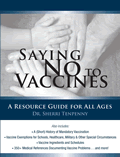HEALTHCARE REPORT: AMERICANS PAYING MORE FOR LESS
By
Jim Kouri
Posted 1:00 AM Eastern
July 3, 2008
NewsWithViews.com
While the costs for medical treatment in the United States continues to increase, the quality of that treatment doesn't appear to be getting much better for Americans.
The quality of health care improved by a mere average 2.3 percent a year between 1994 and 2005, a rate that reflects some important advances but points to an overall slowing in quality gains, according to annual reports released by the Agency for Healthcare Research and Quality (AHRQ).
While costs increased almost seven percent last year alone, the improvement rate, reported in AHRQ's 2007 National Healthcare Quality Report and National Healthcare Disparities Report, is lower than the 3.1 percent average annual improvement rate reported in the 2006 reports.
"Americans are paying more for less for just about every product and service, from the price and size of candy bars to the life and death aspects of medical treatment," warns political strategist Mike Baker.
"This situation is an open invitation for socialists such as presidential hopeful Barack Obama to push for government control and rationing of healthcare services," said Baker.
Quality improvement rates are lower than widely documented increases in health care spending. The Centers for Medicare & Medicaid Services estimate health care expenditures rose by a 6.7 percent average annual rate over the same period.
"Health care quality is improving only modestly, at best," claims Carolyn M. Clancy, M.D. "Given that health care spending is rising much faster, these findings about quality underscore the urgency to improve the value Americans are getting for their health care dollars."
Each year, AHRQ's companion Quality and Disparities reports update national trends in the delivery of health care. The analyses measure quality and disparities in four areas: effectiveness of care, patient safety, timeliness of care and patient centeredness.
The 2007 reports -- the 5th edition since the reports' inaugural release in 2003 -- show some notable gains, such as improvements in the care of heart disease patients. When measuring what portion of heart attack patients received recommended tests, medications or counseling to quit smoking, the reports found an average 5.6 percent annual improvement rate from 2002 to 2005.
Measures of patient safety, meanwhile, showed an average annual improvement of just 1 percent. That modest improvement rate reflected such measures as what portion of elderly patients had been given potentially harmful prescription drugs and how many patients developed post-surgery complications.
The reports also showed some reductions in disparities of care according to race, ethnicity and income. For example, while Hispanics remain more likely than whites to get delayed care or no care at all for an illness, that disparity decreased between 2000/2001 and 2004/2005. In addition, while black children between 19 and 35 months old remain less likely than white children to receive all recommended vaccines, that disparity also decreased.
"The reason for the decreases in disparity isn't due to better medical treatment for minorities and the poor, but because treatment isn't as effective for white Americans," claims Baker.
AHRQ's Quality and Disparities Reports, which are mandated by Congress, are read widely by policymakers, healthcare analysts, public health advocates, health insurers, journalists and consumers.
This year's National Healthcare Quality Report synthesizes more than 200 "quality measures," which range from how many pregnant women received prenatal care to what portion of nursing home residents were controlled by physical restraints. The National Healthcare Disparities Report, meanwhile, summarizes which racial, ethnic or income groups are benefiting from improvements in care.
The 2007 reports draw on data from more than three dozen databases, most sponsored by federal health agencies. Among the findings:
More than 93 percent of heart attack patients received the recommended hospital care in 2005, up from about 77 percent in 2000/2001. The percent of heart attack patients who were counseled to quit smoking increased from about 43 percent in 2000/2001 to about 91 percent in 2005.
Some experts believe, however, that a lack of health insurance may have significant impacts on healthcare quality. For example, only 18 percent of people without insurance went to the dentist at least once in the previous year compared with 51 percent with private insurance. Only 38 percent of uninsured women received mammograms in the past two years compared with 74 percent with private insurance.
About 26 percent of adults with basic disabilities -- those disabilities that challenge mobility or other basic functions -- received delayed care or no care at all compared with about 11 percent of people without disabilities.
About 23 percent of seniors with disabilities took inappropriate medications compared with 13 percent of seniors without disabilities.
Among people who needed treatment for illicit drug use in 2005, only 18 percent of adults between the ages of 18 and 44 actually got treatment. Only 11 percent of children between 12 and 17 got treatment. These rates have remained about the same since 2002.
In one of his campaign speeches, Democrat Party presidential candidate Barack Obama said,
"We now face an opportunity -- and an obligation -- to turn the page on the failed politics of yesterday's health care debates… My plan begins by covering every Americcan. If you already have health insurance, the only thing that will change for you under this plan is the amount of money you will spend on premiums. That will be less. If you are one of the 45 million Americans who don't have health insurance, you will have it after this plan becomes law. No one will be turned away because of a preexisting condition or illness."
Conservatives view Obama's healthcare plan as being the biggest power grab in the history of the United States.
|
Subscribe to the NewsWithViews Daily News Alerts! |
"The leftists want to call the shots when it comes to life and death. The government cannot even deliver the mail properly, yet they want to deliver medical services? It should scare the hell out of any clear thinking American," said Jane Martin, a public school administrator whose work includes providing health services for students.
"Once again the liberals are using scare tactics in order to get Americans to give up their freedoms including the freedom to choose doctors, hospitals and medical treatment," adds Mike Baker.
© 2008 NWV - All Rights Reserved












